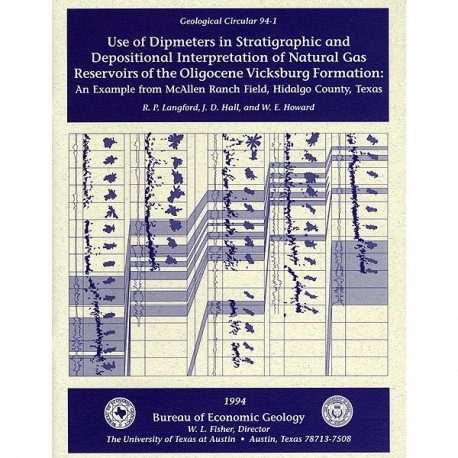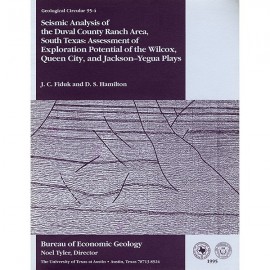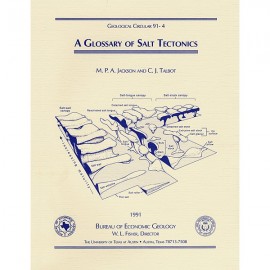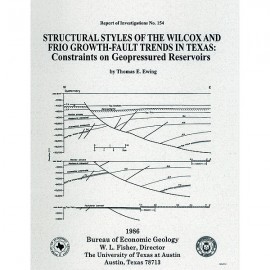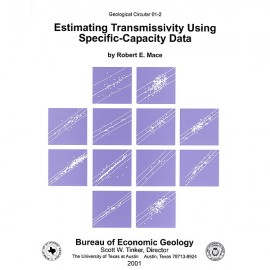Geological Circulars
-
Books & Reports
- Reports of Investigations
- Guidebooks
- Udden Series
- Geological Circulars
- Down To Earth
- Atlases of Major Oil and Gas Reservoirs
- Texas Memorial Museum Publications
- Environmental Geologic Atlas of the Texas Coastal Zone
- Mineral Resource Circulars
- Other Reports
- Seminars and Workshops
- Handbooks
- Submerged Lands of Texas
- Symposia
- Annual Reports
- Open File Reports
-
Maps & Cross Sections
- Thematic Maps
- Miscellaneous Maps, Charts & Sections
- Geologic Atlas of Texas
- STATEMAP Project Maps
- Geologic Quadrangle Maps
- Cross Sections
- Highway Geology Map
- Energy and Mineral Resource Maps
- Shoreline Change and Other Posters
- Wilcox Group, East Texas, Geological / Hydrological Folios
- Bouguer Gravity Atlas of Texas
- River Basin Regional Studies
- Featured Maps
- Posters
- Teachers & the Public
-
Geological Society Publications
- Gulf Coast Association of Geological Societies
- Alabama Geological Society
- Austin Geological Society
- Corpus Christi Geological Society
- Houston Geological Society
- Lafayette Geological Society
- Mississippi Geological Society
- New Orleans Geological Society
- South Texas Geological Society
- GCS SEPM Publications
- Historic BEG & UT Series
Use of Dipmeters in...Interpretation of Natural Gas Reservoirs of the...Vicksburg...Hidalgo County
GC9401
For a downloadable, digital version: GC9401D.
GC9401. Use of Dipmeters in Stratigraphic and Depositional Interpretation of Natural Gas Reservoirs of the Oligocene Vicksburg Formation: An Example from McAllen Ranch Field, Hidalgo County, Texas, by R. P. Langford, J. D. Hall, and W. E. Howard. 39 p., 23 figs., 3 tables, 1994. ISSN: 0082-3309. Print.
To purchase this publication as a downloadable PDF, please order GC9401D.
ABSTRACT
Dipmeter analyses performed within McAllen Ranch field, Hidalgo County, South Texas, proved useful in finding reserves of natural gas. McAllen Ranch field produces from the Oligocene Vicksburg Formation on the downthrown, east block of a listric growth fault that merges with a flatlying glide plane beneath the field. This study concentrated on the Vicksburg S reservoir in a 5-mi2 (13-km2) area of the field (the B area), where a dense array of 15 dipmeter logs and a three-dimensional seismic survey were available.
Overall structure of the Vicksburg S reservoir is that of a convex-upward, eastward-tapering wedge, ranging in thickness from 1,150 to 300 ft (350 to 90 m). The reservoir consists of six stacked progradational sandstone intervals, the S1 through S6 intervals. Rotation of strata into growth faults and the Eocene glide plane west-northwest of the B area are the dominant features visible on all dipmeter logs. Four stratigraphically defined dipmeter domains, separated from one another by abrupt changes in dip, are evident in the Vicksburg S reservoir interval.
Several dipmeter log analysis techniques were discovered that can be used to infer (1) the locations of offset areas of maximum reservoir sandstone thickness, (2) the locations of faults between wells, and (3) the stratigraphic correlation of reservoirs. These techniques were successfully tested in an area in which seismic reinterpretation resulted in discovery of 100 Bcf of natural gas reserves. Similarly combined geologic-petrophysical studies in other fields can result in valuable reserve additions by operators. This circular also describes how hole-elongation data can be used to determine the direction of maximum compressive stress within well bores.
The first dipmeter technique was used to predict the location of offset sandstone thick. We determined the rotation axes of the deformation between dip domains by subtracting the dip of the higher interval from that of the lower one. The residual dips defined axes of rollover rotation associated with the growth fault-glide plane. Using this technique, we successfully predicted the thickness patterns within the S1 and S2 intervals of the Vicksburg S reservoir.
The second technique was used to locate growth faults between wells. We inferred that wells containing strata that exhibited different rotation axes between domain deposition were separated from neighboring technique, we successfully predicted the location of a growth fault between the No. B-3 well and the remainder of B-area wells that were subsequently imaged on three-dimensional seismic data.
In the third technique, we used differences in the number and character of dip domains to infer that intervals are not stratigraphically correlative. Because the basal reservoir sandstone in the No. B-5 well did not contain the same number of dip domains as the S reservoir did in the rest of the B-area wells, the reservoir in that well was reinterpreted to be stratigraphically above the S reservoir.
Hole-breakout azimuths inferred from the dipmeter logs on five wells agreed with azimuths measured from acoustic anisotropy to within 23 degrees, indicating that hole eccentricity can predict horizontal-stress vectors. We consider this difference to be a good match because acoustical anisotropy results are commonly imprecise.
Keywords: dipmeters, gas reservoirs, log analysis, South Texas, Texas, Vicksburg Formation
Citation
Langford, R. P., Hall, J. D., and Howard, W. E., 1994, Use of Dipmeters in Stratigraphic and Depositional Interpretation of Natural Gas Reservoirs of the Oligocene Vicksburg Formation: An Example from McAllen Ranch Field, Hidalgo County, Texas: The University of Texas at Austin, Bureau of Economic Geology, Geological Circular 94-1, 39 p.
